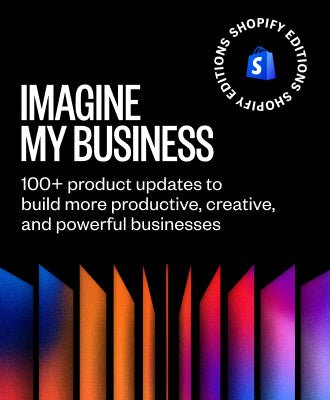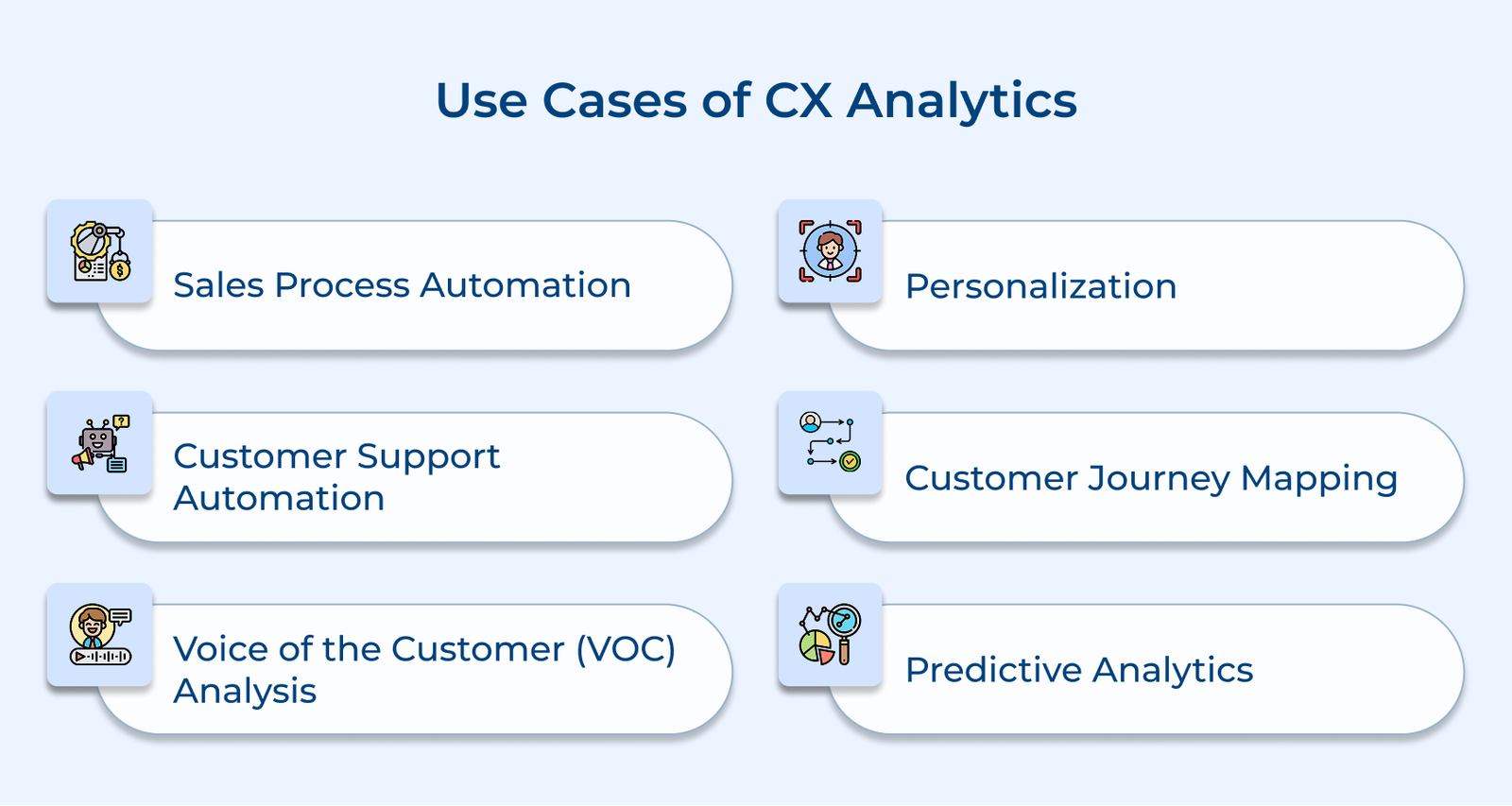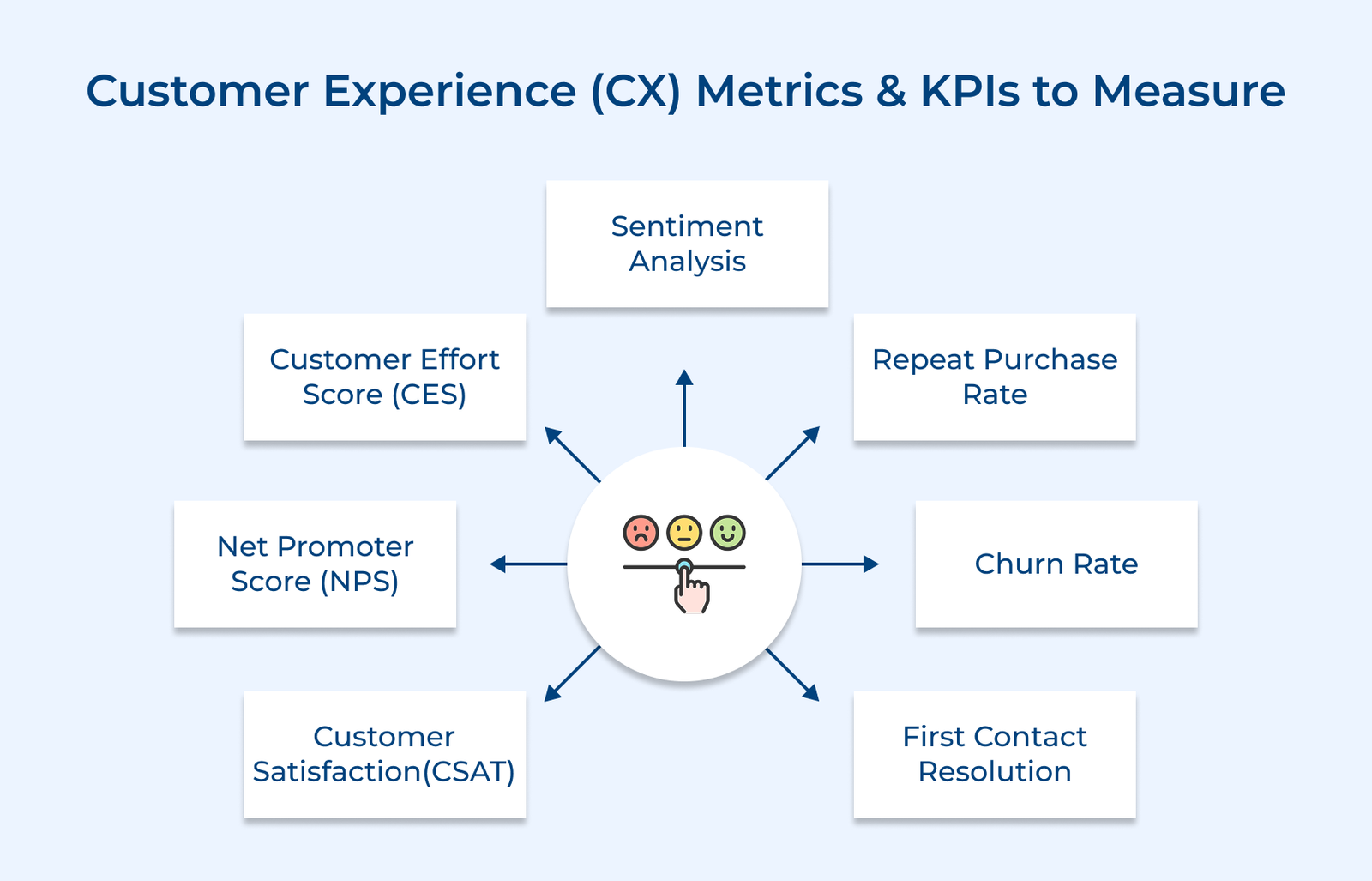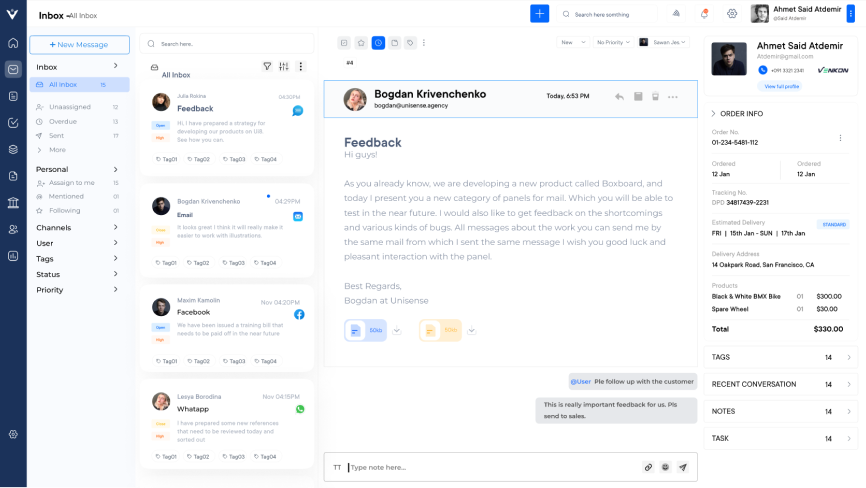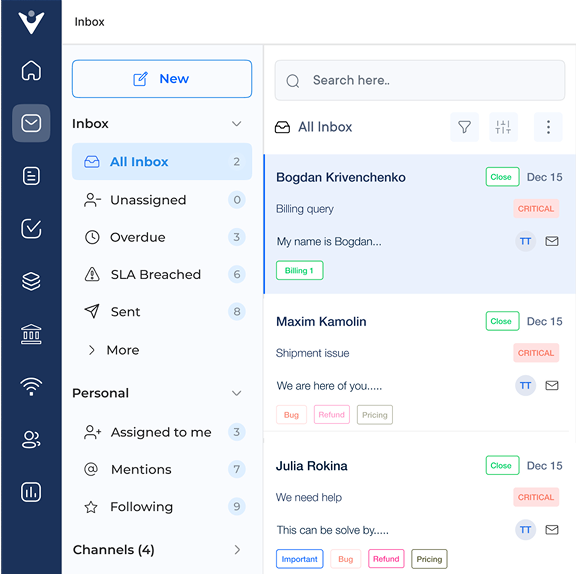1. Define Clear CX Objectives
Improving customer experience starts with having well-defined goals. Clear objectives help businesses stay focused, measure progress and make meaningful improvements that directly impact customers.
The value of setting clear CX objectives lies in giving the entire team a shared direction. It helps streamline efforts, allocate resources wisely and create a consistent standard for measuring success.
Pro tips:
- Identify key metrics: Choose indicators that reveal how customers feel about their experience, such as satisfaction scores, retention rates or NPS.
- Set measurable goals: Create goals that are realistic and time-bound so progress can be tracked effectively.
- Use segmentation: Group customers by demographics, behaviors or preferences to better understand and address their needs.
2. Utilize Social Media Data
Not only does social media data provide us with a platform to share, but it also holds a treasure trove of data that can be utilized to improve customer experience analytics. Social media data offers valuable insights into customer behaviors, preferences and sentiments.
Businesses can gain a deeper understanding of their target audience, identify pain points and optimize their marketing efforts accordingly by analyzing the data. It helps in personalizing customer experiences, enhancing brand loyalty and driving business growth.
Actionable tips:
- Monitoring and listening: Keep track of conversations on social platforms to understand customer concerns, questions and expectations. It helps identify issues before they escalate.
- Sentiment analysis: Use tools to gauge customer moods and opinions. Recognizing trends in sentiment allows for timely improvements in products, services or communication.
- Identifying key voices: Social data can highlight individuals whose opinions influence others. Engaging with the voices can provide valuable feedback and insights that improve the experience for everyone.
3. Develop Voice of Customer Listeners
Building Voice of Customer (VoC) listeners is a practical way to understand and improve the customer experience. Businesses can uncover how customers interact with their offerings, what frustrates them and what they value most by actively analyzing feedback.
VoC listeners help capture the information from multiple sources, like surveys, reviews, social media comments and support interactions, revealing patterns and areas for improvement. The approach allows businesses to make informed decisions based on actual customer experiences rather than assumptions.
Best practices:
- Collect direct feedback: Invite customers to share their feedback through surveys, feedback forms or online reviews. Honest input provides insights into what is working well and where adjustments are needed.
- Monitor social media: Track conversations, comments and mentions of your brand across social platforms. Social media can reveal emerging trends, complaints and opportunities to respond in real time.
- Analyze support interactions: Review calls, chats and emails with customer support teams. The interactions often highlight recurring problems and can guide improvements in support processes.
4. Empower Frontline Teams with Analytics
Frontline teams interact directly with customers, making them a critical source of insight into the customer experience. Equipping these teams with analytics helps them understand customer behaviors, preferences and needs. It enables more informed decisions and effective problem-solving.
Analytics also helps identify patterns and trends, enabling proactive actions to address potential issues. Companies can improve efficiency, optimize processes and drive customer satisfaction by leveraging data effectively. Empowering frontline teams with analytics not only enhances the customer experience but also strengthens the overall business strategy.
Key takeaways:
- Provide comprehensive training: Ensure that frontline teams have the necessary skills to gather, interpret, and utilize customer data effectively.
- Encourage data-driven decisions: Share relevant insights regularly and set measurable, data-based goals. It helps teams rely on facts rather than assumptions when addressing customer needs.
- Enhance collaboration: Break down silos and encourage collaboration between different teams, such as sales, customer service or marketing.
5. Implement Real-Time Experience Monitoring
Real-time experience monitoring involves continuously tracking customer interactions as they happen across all digital touchpoints. The approach lets businesses spot and fix issues before they escalate. Unlike traditional analytics, real-time monitoring shows customer behavior, system issues and emerging trends instantly.
The real-time monitoring approach transforms customer experience management from a reactive discipline into a proactive strategy. It allows businesses to stay ahead of customer needs rather than constantly playing catch-up with their expectations.
Pro tips:
- Use live dashboards: Track key metrics such as page load times, transaction success rates and customer satisfaction scores across all channels in one place.
- Set automated alerts: Configure alerts to notify the appropriate teams when metrics fall outside acceptable ranges or unusual patterns appear.
- Define response protocols: Establish clear procedures outlining who responds to specific issues and within what timeframe.
- Integrate cross-platform data: Combine data from websites, mobile apps, chatbots and other touchpoints to provide a complete, unified view of customer interactions.
6. Focus on Segment Analysis
Segment analysis involves grouping customers based on shared characteristics such as demographics, behavior or preferences. Businesses can better understand their customers’ needs and tailor their marketing strategies accordingly by focusing on segment analysis.
The approach is vital because it allows companies to identify patterns and trends within different customer segments, which in turn enables them to make data-driven decisions. Segment analysis empowers businesses to improve customer satisfaction, increase retention rates and drive business growth.
Actionable tips:
- Define relevant segments: Identify the customer groups that are most important to your goals.
- Gather comprehensive data: Gather information across all touchpoints and channels to build a full picture of customer behavior.
7 Essential Customer Experience (CX) Metrics & KPIs to Measure
Below are seven essential CX metrics and KPIs that can elevate your business to new heights by accurately improving the experiences you deliver.





